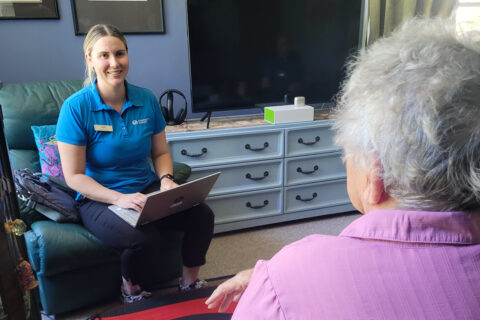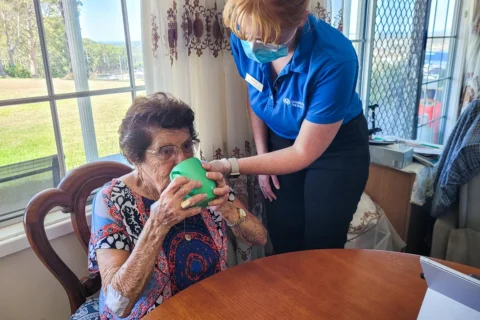We are at Aidacare in Cardiff, and today we are looking at a range of different bathroom shower equipment. With us is Ally, who will be providing us with an overview of the products on display.
Mobile Shower Commode
One of the products we have here is a mobile shower commode. This particular model is attendant propelled, but we also have the option of self propelled. The self propelled version is designed for clients who have sufficient upper limb strength to propel themselves using larger wheels similar to those on a wheelchair. The attendant propelled version, which we have on display here, does not have these larger wheels. Instead, it is pushed by an attendant from the shower to the toilet. This model also has the option of swing away footplates, or a weight bearing platform. We also have a range of sizes available, as well as custom seat options.
One key difference between this mobile shower commode and the next model we will discuss is the seat. This one does not have a seat at the moment, but we do have other seating options available. One option is an upright seat for clients who are still able to sit upright on their own. The other option is a Tilt In Space seat, which can be tilted for added comfort and pressure relief. Ally demonstrates this function for us by tilting the seat back.
Customisable Seat Options
In addition to the standard seating options, we also offer customisable seat options for clients who may require additional support. For example, clients who are at high risk for pressure injuries or who have longer morning routines may benefit from a pressure reducing commode seat. We can also add cut outs and fixtures to the seat for specialized needs. Another option is a pan slide, which can be useful for hygienic transfer from the bedroom to the toilet.
Considerations for Use in the Home
When considering the use of bathroom shower equipment in the home, there are a few important considerations to keep in mind. One is the ability of the equipment to move over thresholds and on carpeted surfaces. For example, a client may need assistance moving a mobile shower commode over a threshold or across a carpeted bedroom to the bathroom. Another consideration is the turning circle of the equipment, particularly in tight bathrooms. It is also important to think about how the equipment will transition from the bathroom to the shower and back again. These are just a few examples of the many factors that an occupational therapist will take into account when prescribing bathroom shower equipment for a client.
Conclusion
As we have seen, there are many different options and considerations when it comes to bathroom shower equipment. It is important to work with an occupational therapist to ensure that the equipment chosen is the right fit for the client’s needs and the home environment. With the right equipment and support, clients can maintain their independence and hygiene while showering and using the toilet.


 November 27, 2024
November 27, 2024

